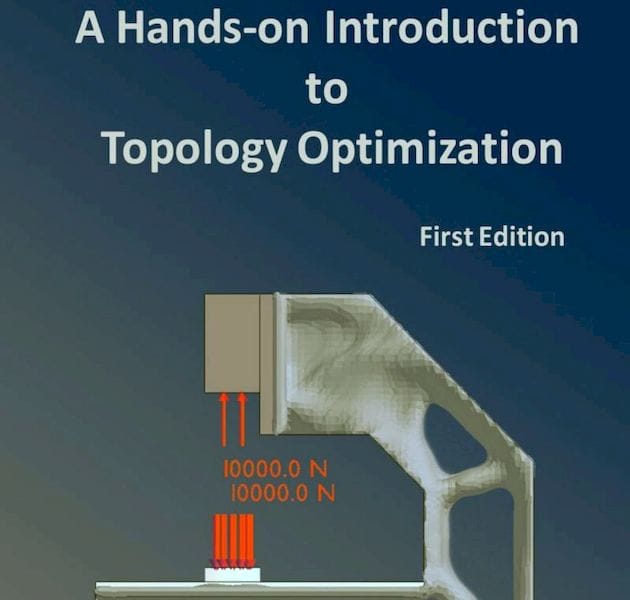
This week’s selection is the detailed work, “A Hands-On Introduction to Topology Optimization” by Amir M. Mirzendehdel.
Mirzendehdel, a Post-Doctoral Research Associate at the famous Xerox Palo Alto Research Center, focuses on design automation for digital manufacturing, and has published multiple research papers on related topics, including topology optimization.
What is Topology Optimization? It’s a discipline that I feel will gradually become increasingly important in the world of 3D printing. Wikipedia explains it as:
A mathematical method that optimizes material layout within a given design space, for a given set of loads, boundary conditions and constraints with the goal of maximizing the performance of the system. TO is different from shape optimization and sizing optimization in the sense that the design can attain any shape within the design space, instead of dealing with predefined configurations.
This is, of course, generative design. We’ve all seen examples of this in recent years, but often for artistic goals rather than for engineering objectives. The ultimate goal is to enable automatic generation of highly optimized structures to meet the needs of designers.
However, such designs are often highly complex in shape and thus are well suited for production using 3D printing processes. Thus it is of importance for those considering using 3D printing to understand topology optimization.
And that’s what this book is all about. Mirzendehdel explains:
Topology optimization is an exciting and powerful method for generating insightful, high-performance designs. The objectives of this text are to introduce the readers to topology optimization terminology, illustrate various sensitivity analysis techniques, and, most importantly, provide numerous examples and case-studies to illustrate the merits of topology optimization.
Over 200+ pages, Mirzendehdel reviews the current state of the art of topology optimization, beginning with the basics of finite element analysis. He goes on to introduce Pareto Analysis, which Wikipedia explains as:
Pareto analysis is a formal technique useful where many possible courses of action are competing for attention. In essence, the problem-solver estimates the benefit delivered by each action, then selects a number of the most effective actions that deliver a total benefit reasonably close to the maximal possible one.
This is precisely what you must do in such design generative situations where there are many competing solution elements.
Mirzendehdel includes several example optimization designs throughout the book to aid in reader understanding. Each section also includes exercises so you can be sure you actually picked up the key points being portrayed.
From simple examples and concepts, Mirzendehdel then works toward understanding the much more complex multi-force, multi-body and multi-material scenarios that one would certainly encounter in real life.
Finally, considerable space is set aside for describing how these processes can be leveraged with 3D printing technologies, including an introduction to them for those unfamiliar, with emphasis on lattice generation.
For those considering performing more advanced design for 3D printing, this book might be a great choice to open your mind to some very new approaches.
Via Amazon

